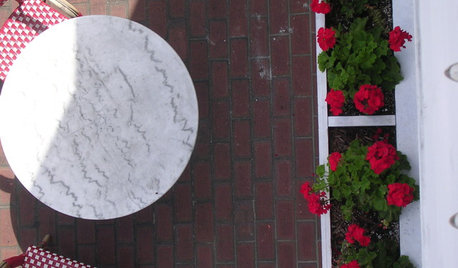What has happened to my garden?
mike28097
13 years ago
Related Stories

GARDENING GUIDESGot Frost-Damaged Plants? How It Happens, and When and How to Prune
Crispy brown leaves are a sure sign that Jack Frost has been to your neighborhood
Full Story
REMODELING GUIDESOne Guy Found a $175,000 Comic in His Wall. What Has Your Home Hidden?
Have you found a treasure, large or small, when remodeling your house? We want to see it!
Full Story
COLORS OF THE YEARPantone Has Spoken: Rosy and Serene Are In for 2016
For the first time, the company chooses two hues as co-colors of the year
Full Story
LIFEHouzz Call: What Has Mom Taught You About Making a Home?
Whether your mother taught you to cook and clean or how to order takeout and let messes be, we'd like to hear about it
Full Story
HOUZZ TOURSMy Houzz: ‘Everything Has a Story’ in This Dallas Family’s Home
Gifts, mementos and artful salvage make a 1960s ranch warm and personal
Full Story
HOUZZ TOURSMy Houzz: An Art-Filled Austin Home Has Something to Add
Can a 90-square-foot bump-out really make that much difference in livability? The family in this expanded Texas home says absolutely
Full Story
WORLD OF DESIGNEngland’s Most Famous Garden Designer Has These Tips for You
Lancelot 'Capability Brown' was born 300 years ago, but his ideas about naturalistic landscape design may be more relevant than ever
Full Story
GARDENING GUIDESGreat Design Plant: Milkweed
Quit cringing. This not-weed plant is a sight to behold in the garden, has a delicious vanilla scent and is a magnet for butterflies
Full Story
You Said It: ‘Texas Has It Going On’ and More Houzz Quotables
Design advice, inspiration and observations that struck a chord this week
Full StorySponsored







mike28097Original Author
anney
Related Professionals
Bell Gardens Landscape Contractors · Fairview Landscape Contractors · Fruit Heights Landscape Contractors · Goodlettsville Landscape Contractors · Lakewood Landscape Contractors · Northbridge Landscape Contractors · Rosemount Landscape Contractors · Stony Brook Landscape Contractors · West Haverstraw Landscape Contractors · Crestline Decks, Patios & Outdoor Enclosures · Dedham Decks, Patios & Outdoor Enclosures · Grand Rapids Decks, Patios & Outdoor Enclosures · Lansdale Decks, Patios & Outdoor Enclosures · Novi Decks, Patios & Outdoor Enclosures · Westfield Decks, Patios & Outdoor Enclosuresmike28097Original Author
anney
mike28097Original Author
anney
jimster
mike28097Original Author
jimster
flora_uk
mike28097Original Author
anney
mike28097Original Author
soonergrandmom